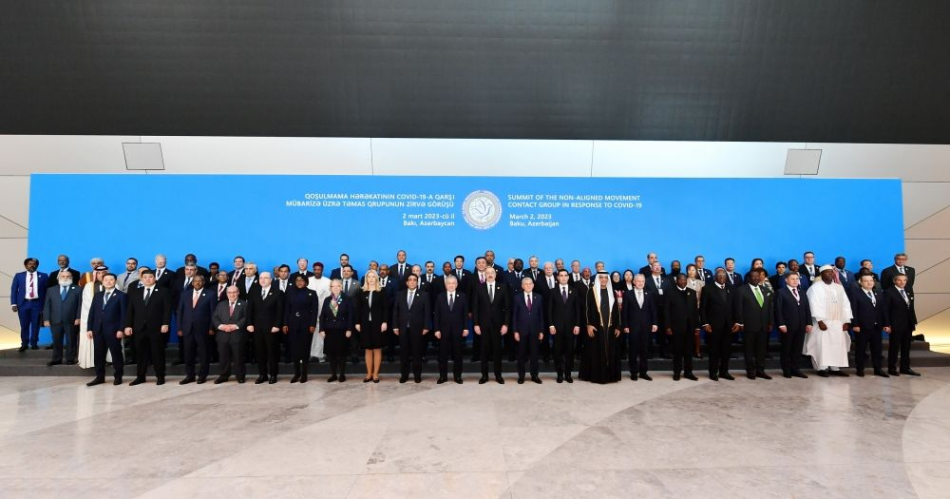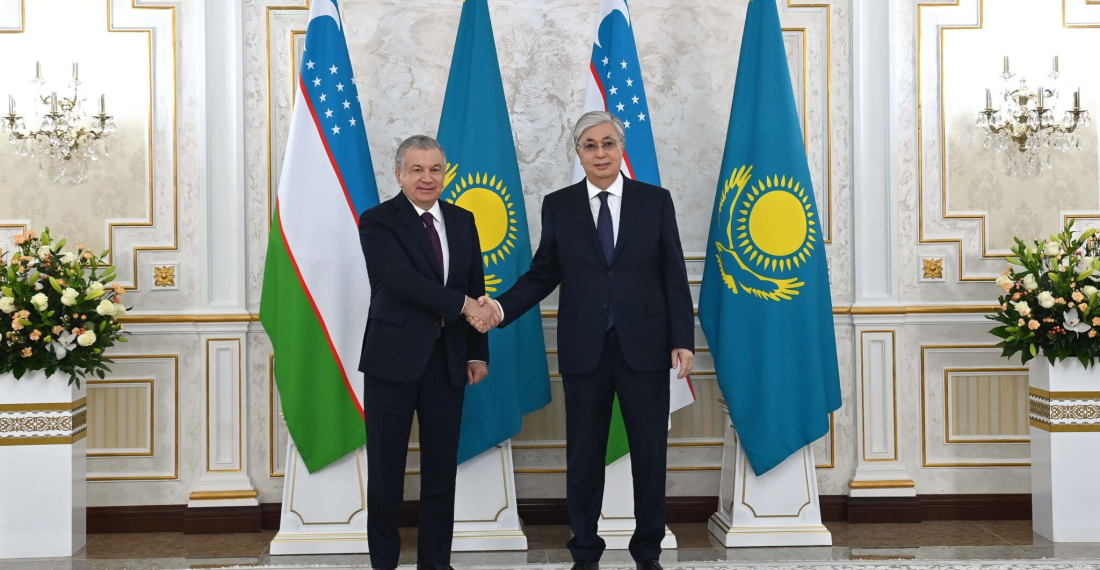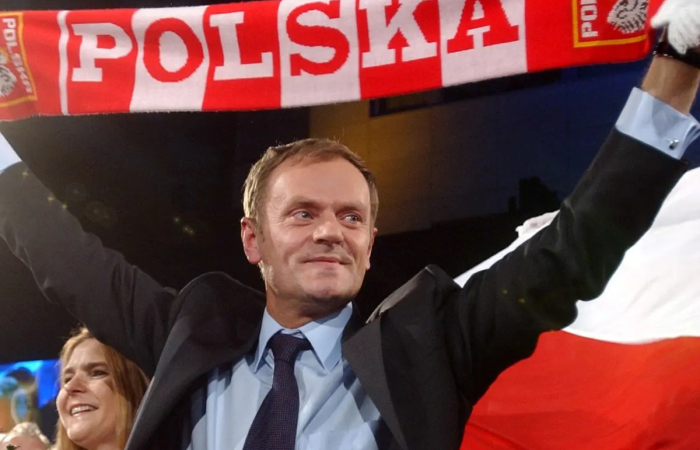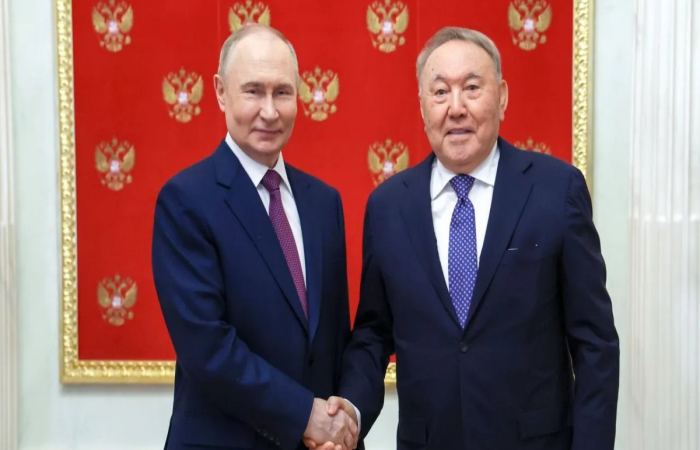Whilst it is often the case that the five Central Asian republics are lumped together and seen by outsiders as one group, in truth there are between them huge differences, a lot of competition, some rivalry, and every now and then, some conflict, writes the commonspace.eu editorial team.
The big two, Kazakhstan and Uzbekistan, are often perceived to be in competition with each other. The two have different strengths and weaknesses, which means that if they play their cards right they can turn this competition into a healthy collaborative relationship with a win-win situation.
This is what appears to be happening at the moment.
Kazakh President, Kassym-Jomart Tokayev, met his Uzbek counterpart Shavkat Mirziyoyev in Shymkent on 3 March to discuss “trade and prospects for strengthening allied relations between the two countries”. The Kazakh presidential administration described the meeting as “informal”.
The two leaders appear to have two priorities. The first is to co-ordinate positions in the face of what appears to be considerable pressure from Moscow for the two countries to tow the line and stay in the fold, at a time when the Kremlin feels embattled due to the ongoing war in Ukraine.
The second priority of the two presidents seems to be a desire to ensure that the many documents on major areas of co-operation, including the treaty on allied relations and an agreement on border demarcation, which they signed during Tokayev’s state visit to Tashkent in December 2022, are realised and fulfilled. The 40 agreements signed in December envisioned 40 economic initiatives worth $2.5 billion.
The official statement at the end of the meeting said that:
“in Shymkent, the presidents focused on trade and economic cooperation, including opportunities for strengthening mutual trade, attracting investments, and expanding collaboration in the industrial, energy, agricultural, transportation, and logistics sectors. They also exchanged views on regional issues.”
Both countries are very cautiously exploring political reforms, and more boldly, seeking economic reform. The two leaders are firmly entrenched, but are vulnerable to threats, including from their own elites. They appear to be developing strong personal bonds, which can be very useful, especially in times of crisis.
The meeting in Shymkent came immediately after the two leaders received in their respective capitals US Secretary of State, Antony Blinken. Making a point of going to both Astana and Tashkent, Blinken once more emphasised the importance of Kazakhstan and Uzbekistan in the region, and no doubt encouraged the two to increase the co-operation between them.

Blinken signals a firm but nuanced US approach to Central Asia
US Secretary of State Antony Blinken visited Central Asia last week, first going to Astana where he met President Tokayev and where he participated in the regular meeting of the C5+1 – a forum bringing together the five Central Asian nations with the United States. He then went on to Tashkent to meet President Mirziyoyev.
In the region Blinken took the opportunity to restate the US position towards the Central Asian republics namely, “enduring support for their sovereignty, for their independence, for their territorial integrity”, and US “determination that each be able to determine their own futures consistent with those principles.”
But Blinken was quick to also add the economic dimension of the US relationship with the region. He stated:
“a big part of the work that we’re doing here is to help the region diversify trade relationships, to build new partnerships and relationships with other countries, including with the United States, so they’re not dependent on any one country or any one source for trade and investment, and at the same time to increase trade and investment within Central Asia itself. There’s a very strong potential market here, and the more connectivity we have among the countries of Central Asia, the more collaboration we have, the stronger that market’s going to be, the more investment it’s going to attract from outside of Central Asia.”
Blinken however made it clear that the US will move cautiously:
“Central Asia is in a complicated part of the world with longstanding relationships with different countries based on history, based on geography, and that’s something that we well understand. But I think we also see each of these countries looking to multiply and deepen their relationships and partnerships with other countries around the world. And in that, the United States wants to be a steadfast partner and a partner that works with them to create new opportunities for people in this region and new opportunities for us to work together.”
The visit of the US Secretary of State to Central Asia was as timely as it was important. As the region works to break out of its Russian straightjacket, an intelligent and well calibrated US approach is hugely important.

Guests of honour in Baku
On 2 March, Azerbaijan hosted a meeting of the contact group of the Non-Aligned Movement (NAM) focusing on the recovery from the Covid-19 pandemic. Azerbaijan currently holds the Chairmanship of the Movement, which has around 120 member states, mostly in the global south. Whilst most delegations were led by the vice-presidents, prime ministers or foreign ministers, Uzbekistan and Turkmenistan were represented by their presidents, and they were clearly the guests of honour at the event.
Baku has been seeking for some time to nurture relations with the Central Asian republics and it appears to be making progress. Azerbaijan is keen to consolidate connectivity links with Central Asia, and to provide the alternative corridor for the export of energy and other goods from the region to European markets. But there is also a political angle. Azerbaijan has generally been supported by Central Asian countries in its dispute with Armenia. It also sees the Central Asian republics as allies in its efforts to manage relations with Moscow.
So the presence in Baku of the presidents of Uzbekistan and Turkmenistan was very well received by the Azerbaijani leadership, and reflects a broader sense of increased co-operation between Azerbaijan and the Central Asian region.






